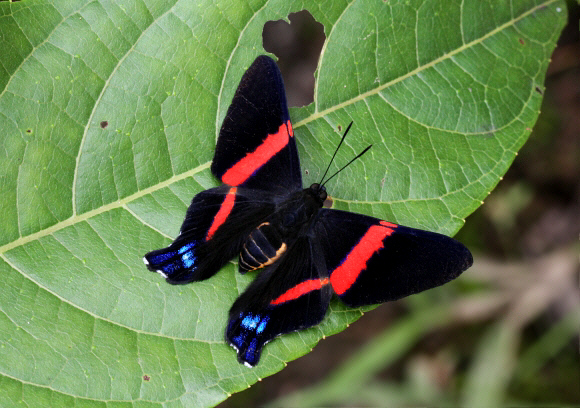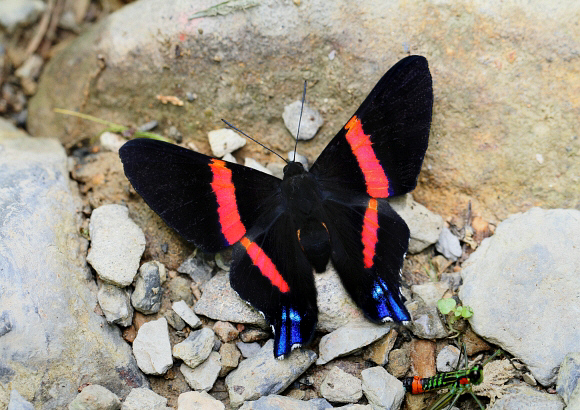 Ancyluris inca huascar, Tatama NP, Colombia – Adrian Hoskins
Ancyluris inca huascar, Tatama NP, Colombia – Adrian Hoskins
Introduction
The genus Ancyluris comprises of 16 beautiful tailed Riodinids, all confined to the neotropical region. They are closely related to the genus Rhetus, so much so that the females of Ancyluris aristodorus and Rhetus periander are almost indistinguishable, at least from the uppersides.
Males of most Ancyluris species have black uppersides with red bands. In females these bands are broader and paler. In jurgensenii the bands on the female are pure white, and in aristodorus and formosissima they are white in both sexes. Males of all species have a blue iridescence on the underside of the wings.
Ancyluris inca is distributed from Mexico to Bolivia. There are 7 named subspecies.
 Ancyluris inca huascar, Tatama NP, Colombia – Adrian Hoskins
Ancyluris inca huascar, Tatama NP, Colombia – Adrian Hoskins
Habitats
This is a mid-elevation cloudforest species found at elevations between about 200-1600m.
Lifecycle
I have no data regarding inca but the lifecycle is likely to be very similar to that of other Ancyluris species as follows: The eggs are white and highly sculptured. They are laid singly in fissures on the stems or twigs of the foodplants. Egg-laying females tend to settle high up, then walk backwards down the stem, probing with the ovipositor in various places before depositing each egg. The larval foodplants are trees in the families Melastomaceae and Euphorbiaceae. The larvae are gregarious, living in small groups of mixed instars. They are reported to be cannibalistic.
Adult behaviour
As with other Ancyluris species, males can be found imbibing moisture from damp soil in the early morning and late afternoon. In late morning they perch under the leaves of trees or bushes. Any passing Ancyluris of either sex is intercepted and challenged. Both sexes nectar at Cordia, Croton, Eupatorium and other flowers.
